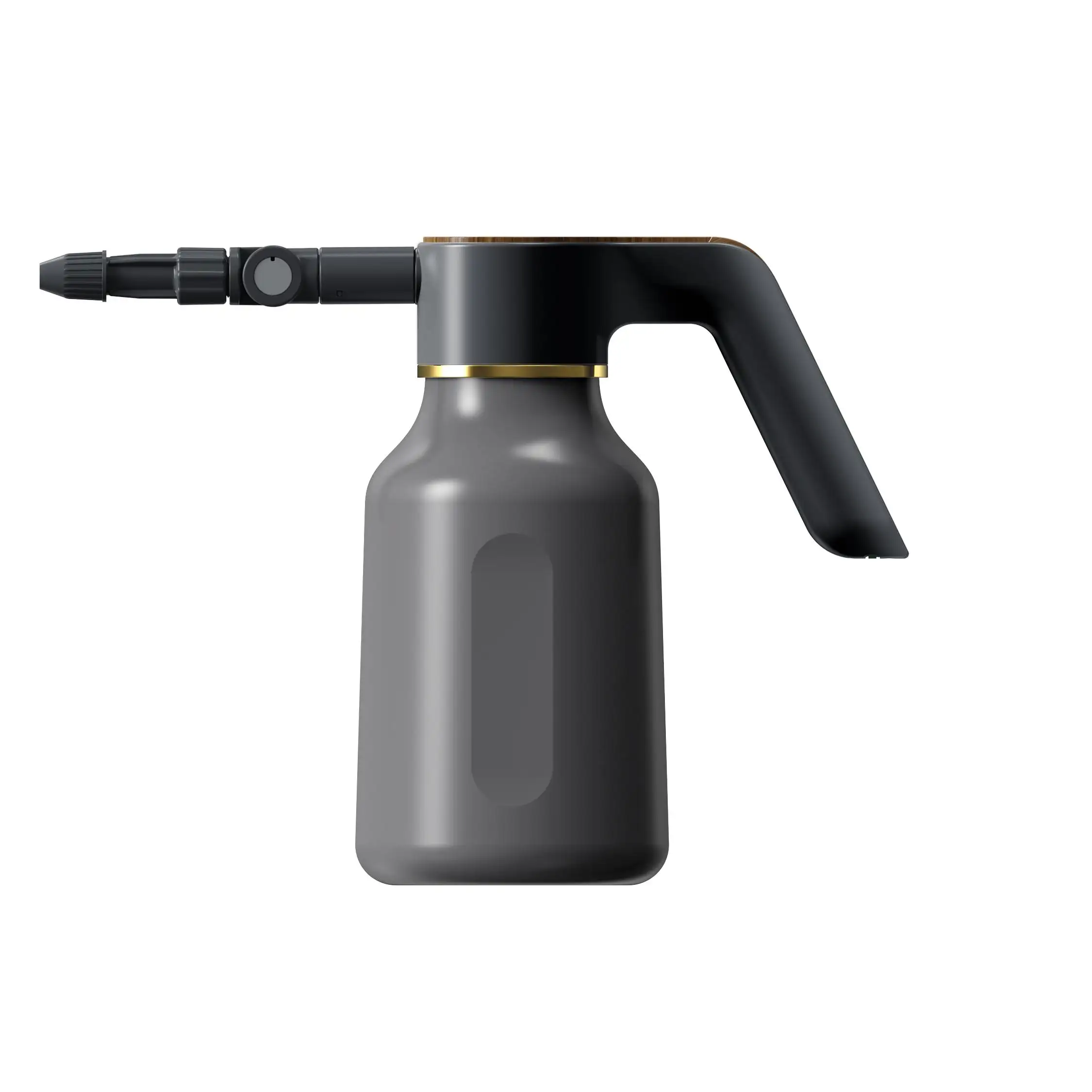Mastering Precise Pest Control Through Advanced Spraying Technology
Garden sprayers have revolutionized the way we approach pest management in both residential gardens and commercial agriculture. These versatile tools have become indispensable for ensuring accurate and efficient pesticide application while minimizing waste and environmental impact. Modern garden sprayers combine innovative design with practical functionality, offering gardeners and farmers precise control over their pest management strategies.
The evolution of garden sprayers from simple hand-pumped devices to sophisticated pressure-regulated systems represents a significant leap forward in agricultural technology. Today's sprayers incorporate features that enhance accuracy, reduce drift, and ensure even coverage – crucial factors in effective pest control. Understanding how these tools work and their benefits is essential for anyone serious about maintaining a healthy garden or agricultural space.

Essential Components of Modern Garden Sprayers
Advanced Nozzle Technology
At the heart of every effective garden sprayer lies its nozzle system. Modern nozzles are engineered to deliver precise droplet sizes and spray patterns, allowing for optimal coverage and reduced drift. Variable spray patterns can be adjusted from fine mist to direct stream, making garden sprayers adaptable to different application needs. The latest nozzle designs incorporate anti-drip mechanisms and pressure regulation features, ensuring consistent application rates throughout the spraying session.
High-quality nozzles are typically made from durable materials like brass or stainless steel, resistant to corrosion and wear from harsh chemicals. This durability maintains spray accuracy over time, preventing irregular spray patterns that could lead to under or over-application of pesticides.
Pressure Control Systems
Pressure regulation is crucial for maintaining consistent spray patterns and droplet sizes. Modern garden sprayers feature sophisticated pressure control systems that maintain steady pressure throughout the application process. This consistency ensures uniform coverage and prevents the formation of either too fine or too coarse droplets that could compromise application effectiveness.
Many professional-grade garden sprayers now include pressure gauges and adjustable pressure settings, allowing operators to fine-tune their application based on specific pesticide requirements and environmental conditions. This level of control significantly improves application accuracy and reduces waste.
Advanced Application Techniques
Calibration Methods
Proper calibration of garden sprayers is fundamental to achieving accurate pesticide application. Modern sprayers often include calibration markers and guides that help users determine the correct flow rate and walking speed. This precision ensures that the intended amount of pesticide reaches its target area without over or under-application.
Digital calibration systems are becoming increasingly common in professional-grade garden sprayers, offering real-time feedback on application rates and coverage. These systems can store multiple calibration settings for different pesticides and application scenarios, streamlining the process for regular maintenance tasks.
Coverage Optimization
Modern garden sprayers enhance coverage through various design features and application techniques. Adjustable spray patterns allow users to match the application method to specific target areas, whether treating individual plants or broader areas. Some models include specialized attachments for reaching under leaves or treating tall vegetation effectively.
Advanced spray technology helps maintain consistent droplet size and distribution, ensuring thorough coverage while minimizing off-target drift. This precision is particularly important when applying contact pesticides that require complete coverage for maximum effectiveness.
Environmental and Safety Considerations
Drift Reduction Technology
Modern garden sprayers incorporate various drift reduction features to minimize environmental impact and improve application accuracy. Air-induction nozzles create larger droplets that are less prone to drift, while still maintaining effective coverage. Specialized shield attachments and wind-resistant designs further help control spray direction and reduce off-target movement.
These technological improvements not only protect the environment but also ensure that more of the pesticide reaches its intended target, improving both efficiency and cost-effectiveness of applications.
Safety Features and Design
Today's garden sprayers prioritize operator safety through ergonomic design and protective features. Improved sealing systems prevent leaks and spills, while comfortable harnesses and balanced designs reduce operator fatigue during extended use. Many models include integrated mixing systems that minimize direct contact with pesticides during preparation.
Quick-release mechanisms and easily cleanable components make maintenance safer and more efficient, while clear measurement markings help prevent mixing errors that could lead to inaccurate application rates.
Future Innovations in Sprayer Technology
Smart Integration and Automation
The future of garden sprayers lies in smart technology integration. Emerging innovations include GPS-guided application systems, automated flow control, and mobile app connectivity for tracking application data. These advancements promise even greater precision and efficiency in pesticide application.
Some manufacturers are developing sprayers with built-in weather monitoring capabilities that can adjust application parameters based on environmental conditions, further improving accuracy and reducing waste.
Sustainable Design Approaches
Environmental consciousness is driving the development of more sustainable garden sprayer designs. New models feature recyclable components, reduced plastic usage, and more efficient pesticide delivery systems that minimize environmental impact while maintaining high application accuracy.
Research continues into alternative power sources and more environmentally friendly materials, ensuring that future garden sprayers will be both more effective and more sustainable.
Frequently Asked Questions
How often should I calibrate my garden sprayer?
Garden sprayers should be calibrated at least once per season, or whenever changing between different types of pesticides. Regular calibration ensures consistent application rates and maintains optimal performance. It's also advisable to recalibrate after replacing any components or if you notice changes in spray patterns.
What is the ideal pressure range for most garden sprayer applications?
Most garden sprayer applications work best between 15-60 PSI, depending on the specific pesticide and target area. Lower pressures (15-25 PSI) are suitable for general spraying, while higher pressures may be needed for better penetration in dense foliage. Always consult your sprayer's manual and pesticide label for specific recommendations.
How can I improve the longevity of my garden sprayer?
To maximize the lifespan of your garden sprayer, clean it thoroughly after each use, store it properly protected from direct sunlight, and regularly inspect seals and nozzles for wear. Perform routine maintenance such as lubricating moving parts and replacing worn components. Using clean water for mixing and avoiding harsh chemicals when not necessary can also extend equipment life.


